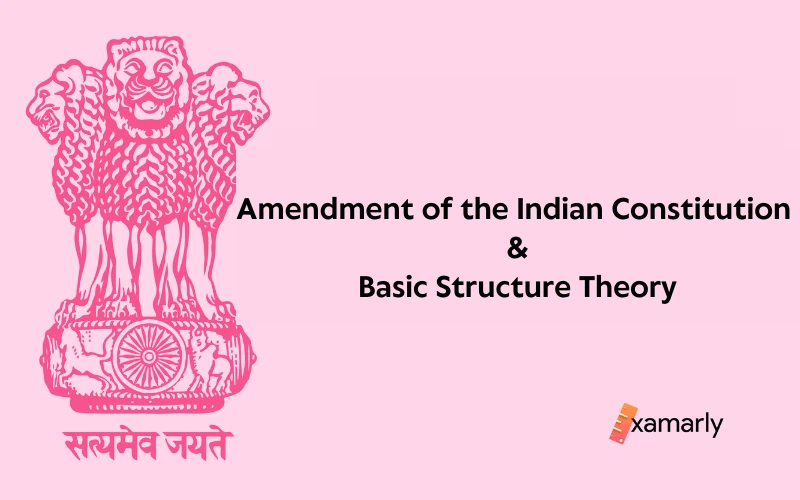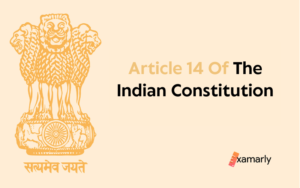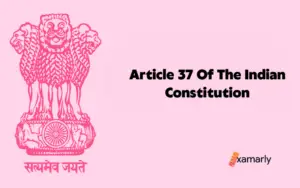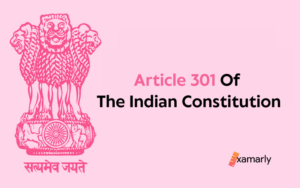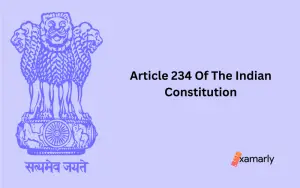The Amendment of the Indian Constitution and Basic Structure Theory is an important topic within the Indian Polity syllabus for UPSC exams. Furthermore, it has been a long-debated provision for social, economic, and political justice.
What is Basic Structure Theory? Why do we have amendments to the Indian Constitution? If we have the provision of constitutional amendments, does that mean there is some sort of limitations or restrictions to what can be amended?
Well, don’t worry if you don’t know the answers to these questions.
This makes it more interesting and important for you to learn more about it. There is no harm in having a bit more legal knowledge.
Read on to know more Amendment of the Indian Constitution and Basic Structure Theory.
- The Amendment of the Indian Constitution and Basic Structure Theory
- Elements of Basic Structure Theory
- The Development of the Basic Structure Theory" could be an alternative expression in British English.
- Shankari Prasad V. Union of India (1951)
- Sajjan Singh V. State of Rajasthan (1965)
- Golak Nath V. State of Punjab and Anrs. (1967)
- Kesavananda Bharati V. State of Kerala (1973)
- Raj Narain V. Indira Nehru Gandhi (1975)
- Minerva Mills Ltd V. Union of India (1980)
- Waman Rao & Ors V.Union Of India (1981)
- Indira Sawhney V.Union of India (1992)
- S.R. Bommai V. Union of India (1994)
- Importance of The Basic Structure
- Criticism on Amendment of the Indian Constitution and Basic Structure Theory
- Key Points on Amendment of the Indian Constitution and Basic Structure Theory
- Conclusion
- FAQs on Amendment of the Indian Constitution and Basic Structure Theory
- Who first introduced the basic structure theory?
- What are the six fundamental rights?
- Which case is referred to as a fundamental rights case?
- What is the role of the Supreme Court in the Basic Structure Doctrine?
- How many times has the Indian Constitution been amended?
- Can the Basic Structure of the Indian Constitution be amended?
- What are some examples of the Basic Structure of the Indian Constitution?
- How has the Basic Structure Doctrine evolved?
- What is the significance of the Kesavananda Bharati case regarding the Basic Structure Doctrine?
- Can the Indian Parliament change the Basic Structure Doctrine?
- What is the Article 368 of the Indian Constitution?
The Amendment of the Indian Constitution and Basic Structure Theory
The Indian Constitution is a living constitution that may be modified to meet the demands of the dynamic nature of society.
Article 368 of the Constitution empowers Parliament to change the Constitution if necessary. The mechanism for change is also detailed in the Article.
The notion of basic structure is only a judicial creation designed to prevent Parliament from abusing its unrestricted power of modification.
Basic Structure Theory is that the fundamental aspects of the Indian Constitution should not be changed to the point that the Constitution’s identity is lost.
The idea asserts that the Indian Constitution respects certain principles that are the fundamental norms of the Parliament. That is, any amendment cannot modify these principles.
According to the basic structure theory, which is a common law legal theory, a sovereign state’s constitution contains specific features and basic rights that cannot be changed by its legislative power. India, Bangladesh, Malaysia, Pakistan, and Uganda recognize the philosophy.
The theory was formally established by the Supreme Court of India in a series of constitutional law judgments in the 1960s and 1970s that culminated in Kesavananda Bharati v. the State of Kerala.
The Indian Constitution does not refer to the phrase “Basic Structure.” The notion that Parliament cannot pass laws that alter the essential framework of the constitution arose gradually through time and in various circumstances.
The goal is to safeguard people’s rights and liberties against the absolute powers of governance ad legislation while preserving the distinctive features of Indian democracy.
Article 7b of the Constitution of Bangladesh may be the only legal system in the world that expressly, officially, and rigidly acknowledges this idea.
Read More: Secular Meaning in Indian Constitution
Elements of Basic Structure Theory
The Basic Structure Theory emphasizes the idea of basic features of the constitution that cannot be altered. What are these basic features? The Judiciary has not specifically stated the core components of the Constitution.
In various cases, the Courts have identified at least 20 aspects as “fundamental” or “important,” and they have been included in the basic framework.
It was noted that the Court would decide whether a specific aspect of the Constitution is a basic feature in each case that came before it. The following are some of the essential features or basic features of the Constitution:
- Constitutional Supremacy
- The rule of law
- The separation of powers principle
- Objectives stated in the preamble of the Indian Constitution
- Review by a judge
- Articles 32 and 226 of the Constitution
- Federalism or federal character including financial liberty of states under Articles 282 and 293
- Secular character
- Republican, secular and democratic form
- Individual freedom, personal liberty and dignity
- National unity and integrity
- The equality of status – not every facet of equality but the core of equal justice
- Part III of the Constitution where the “essence of rights” of other fundamental rights is discussed
- Part IV of the Constitution where the notion of social and economic justice to construct a welfare state is addressed
- Balancing Fundamental Rights & Directive Principles
- Parliamentary governance system
- The fundamental concept of free and fair elections
- Restriction on the modifying authority granted by Article 368
- Judiciary’s independence
- Access to justice
- Supreme Court of India powers under Articles 32, 136, 141, and 142
The Development of the Basic Structure Theory” could be an alternative expression in British English.
The concept of Basic Structure has undergone several changes. These changes are marked by landmark judgement and landmark decisions by a different bench of judges.
Let us take a peek at these to understand the evolution of the basic elements of the Basic Structure in depth.
This can also be a peek into how limited power and unlimited power is understood by the different constitutional bench.
Shankari Prasad V. Union of India (1951)
The Supreme Court argued in this decision that the Parliament of India’s capacity to alter the Constitution under Article 368 encompassed the ability to amend the Fundamental Rights granted in Part III as well.
Similar Posts:
- 69th Amendment of the Indian Constitution
- 70th Amendment of the Indian Constitution
- 101st Amendment of the Indian Constitution
- 42nd Amendment of the Indian Constitution
Sajjan Singh V. State of Rajasthan (1965)
In this case too the Supreme Court ruled that Parliament had the authority to change any provision of the Constitution, including the Fundamental Rights.
It is significant to note that two judges who dissented, in this case, were concerned about whether citizens’ fundamental rights would turn into a toy for the ruling party.
Golak Nath V. State of Punjab and Anrs. (1967)
Supreme Court reversed its prior view that Fundamental Rights can be changed. It said that the parliamentary restriction mentioned in Article 13 does not apply to Fundamental Rights.
Thus, to change the Fundamental Rights a new Constituent Assembly is required. Golak Nath’s case gave Fundamental Rights a “transcendental position.”
Kesavananda Bharati V. State of Kerala (1973)
This was a landmark judgement in formulating the fundamental structure theory. The Supreme Court ruled that no component of the Constitution, including Fundamental Rights, was beyond the competence of Parliament to change.
According to the ruling of the Supreme Court, the parliament may only alter the constitution, not rewrite it. The ability to improve is not the ability to destroy. Any amendment made by Parliament that contests the basic structure of the Constitution of India may be invalidated by the judiciary.
Raj Narain V. Indira Nehru Gandhi (1975)
The Supreme Court used the principle of fundamental structure to strike down Clause(4) of Article 329-A, which was adopted by the 39th Amendment of India in 1975.
This was because it exceeded Parliament’s modifying authority since it damaged the Constitution’s core elements.
The 39th Amendment Act exempted the election of the President, Vice President, Prime Minister, and Speaker of the Lok Sabha from judicial review. The administration did this to downplay Indira Gandhi’s trial for fraudulent electoral tactics by the Allahabad High Court.
Minerva Mills Ltd V. Union of India (1980)
Minerva Mills V. Union of India case further reinforces the Basic Structure idea. The decision declared two amendments to the Constitution established by the 42nd Amendment Act of 1976 to be unconstitutional.
The decision establishes that the Constitution, not the Parliament, is superior.
Judicial review and the balance between Fundamental Rights and the DPSP were two features added to this list. The justices determined that a restricted amending authority is a fundamental component of the Constitution.
Waman Rao & Ors V.Union Of India (1981)
The Supreme Court considered the constitutionality of Article 31A and Article 31B of the Indian Constitution in light of the basic structure theory articulated in Kesavananda Bharati’s earlier decision.
The Court made an important point on the doctrine’s applicability and decided that it should not have a retroactive impact.
This implies that any decisions taken before the introduction of the doctrine remain legitimate.
The ruling’s immediate consequence meant that all actions and regulations contained in the Constitution’s Ninth Schedule Provisions (9th Schedule) previous to the Kesavananda case would remain legitimate.
But subsequent alterations to the schedule might be contested based on violating the theory of the fundamental structure.
Indira Sawhney V.Union of India (1992)
The Supreme Court considered the meaning and breadth of Article 16(4), which sets job reservations for members of underprivileged groups.
It affirmed the constitutional legitimacy of the 27% reservation for OBCs subject to specific limitations (such as the exclusion of the creamy layer, the prohibition of reservations in promotions, the requirement that the overall amount of reservations does not exceed 50%, etc.). ‘Rule of Law’ was added to the list of core provisions of constitutional qualities here.
S.R. Bommai V. Union of India (1994)
In this decision, the Supreme Court attempted to limit the obvious abuse of Article 356 (about the imposition of the President’s Rule on states). Even though there was no possibility of constitutional modification in this Article, the idea of core doctrine was used.
The Supreme Court has held that if state government policies are aimed against an element of the essential structure of the Constitution.
It would constitute a valid basis for the exercise of central power under Article 356″ which could be an alternative expression in British English.
Importance of The Basic Structure
- The basic structure theory attests to the notion of Constitutionalism in preventing the governing majority’s brutal majority from destroying the core of the Constitution of India. The core idea rescued Indian democracy by limiting constituent power; else, the limitless power of parliament would have converted India into a totalitarian state.
- It aids in the preservation of the fundamental concepts of our constitution, which were painstakingly crafted by our founding fathers.
- It strengthens our democracy by defining a real separation of powers in which the judiciary is distinct from the other two institutions. It has also given the Supreme Court unrivalled broad power, making it the most powerful court in the world.
- It granted essential rights to citizens of India by limiting the modifying powers of the legislative organ of the state, which no organ of the state may override.
- It is more progressive and receptive to changes in time since it is dynamic, as opposed to the inflexible nature of previous judgments.
Criticism on Amendment of the Indian Constitution and Basic Structure Theory
- The notion is commonly criticized for having no basis in the wording of the Constitution. The doctrine lacks a scriptural foundation. There is no clause stating that this Constitution has a basic structure that is outside the scope of modifying power. Thus constitutional validity is brought into question.
- Critics argue that the concept empowers the judicial power to impose its worldview on a democratically established government.
- There is no clear definition of what defines the so-called basic structure of the Constitution of India is. This ambiguous nature makes for inherent limitations.
- In recent years, the concept has been cited in instances deemed to be examples of judicial overreach. Using this reasoning, the Supreme Court deemed the NJAC bill null and invalid. This is another implied limitation.
Key Points on Amendment of the Indian Constitution and Basic Structure Theory
- The Indian Constitution can be amended through Article 368 by the Parliament.
- The basic structure theory is a judicial concept that aims to prevent the Parliament from abusing its power to change the Constitution.
- The basic structure theory holds that certain fundamental aspects of the Constitution cannot be altered to the point of losing the Constitution’s identity.
- The Parliament must respect certain principles, and any amendment cannot modify them.
- The basic structure theory is recognised in several countries, including India, Bangladesh, Malaysia, Pakistan, and Uganda.
- The Supreme Court of India formally established this theory in the Kesavananda Bharati V. State of Kerala case.
- Although the phrase “Basic Structure” is not mentioned in the Indian Constitution, this concept has evolved to safeguard people’s rights and liberties while preserving the distinct features of Indian democracy.
- In Bangladesh, the idea of basic structure is expressly acknowledged in Article 7B of its Constitution.
Conclusion
Amendment of the Indian Constitution and Basic Structure Theory is one of the basic principles underlying the Indian Constitution and the Indian democratic form of government.
While some of its contents are currently being debated, the Courts have repeatedly upheld several.
The power of amendment comes within the underlying principles of democracy. This concept is must know to all UPSC aspirants. To learn more about other fundamental frameworks of Indian Polity and Constitutional Amendments of India log onto Examarly.
FAQs on Amendment of the Indian Constitution and Basic Structure Theory
Who first introduced the basic structure theory?
In the Sajjan Singh V. State of Rajasthan case of India, Justice Mudholkar initially introduced the fundamental structural notion by quoting a 1963 judgment by the Supreme Court of Pakistan (1965).
What are the six fundamental rights?
Six Fundamental Rights are as follows:1. Right to Equality2. Right against Exploitation3. Cultural and Educational Rights4. Right to Freedom5. Right to Freedom of Religion6. Right to Constitutional Remedies
Which case is referred to as a fundamental rights case?
The Kesavananda Bharati case was widely regarded as a fundamental rights case.
What is the role of the Supreme Court in the Basic Structure Doctrine?
The Supreme Court is responsible for upholding the Basic Structure Doctrine and ensuring that the fundamental principles of the Constitution are not violated through amendments.
How many times has the Indian Constitution been amended?
The Indian Constitution has been amended 104 times as of January 2023.
Can the Basic Structure of the Indian Constitution be amended?
The Basic Structure of the Indian Constitution cannot be amended according to the Basic Structure Doctrine.
What are some examples of the Basic Structure of the Indian Constitution?
The Basic Structure of the Indian Constitution cannot be amended according to the Basic Structure Doctrine.
How has the Basic Structure Doctrine evolved?
The Basic Structure Doctrine has evolved through various landmark judgments of the Supreme Court.
What is the significance of the Kesavananda Bharati case regarding the Basic Structure Doctrine?
The Kesavananda Bharati case is significant as it established the Basic Structure Doctrine and defined the scope of the amending power of the Parliament.
Can the Indian Parliament change the Basic Structure Doctrine?
The Indian Parliament cannot change the Basic Structure Doctrine as it is a legal doctrine established by the Supreme Court.
What is the Article 368 of the Indian Constitution?
Article 368 of the Indian Constitution deals with the amendment process of the Constitution.


